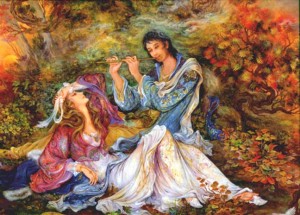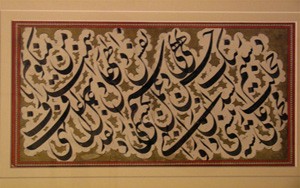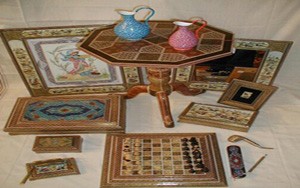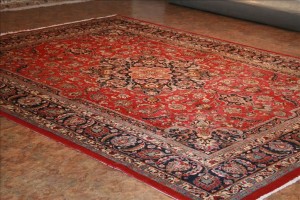Painting
Painting is one of the most important of art of Iran and has many Masters, such as Kamal-ol-Molk further pushed forward the European influence in Iran. It was during the Qajar era when “Teahouse painting” emerged.
Subjects of this style were often religious and nationalist in nature depicting scenes from Shiite history and literary epics like Ferdowsi’s Shahnameh.
Miniature
 A Persian miniature is a richly detailed miniature painting which depicts religious or mythological themes from the region of the Middle East now known as Iran. The art of miniature painting in Persia flourished from the 13th through the 16th centuries, and continues to this day, with several contemporary artists producing notable Persian miniatures. These delicate, lush paintings are typically visually stunning, with a level of detail which can only be achieved with a very fine hand and an extremely small brush.
A Persian miniature is a richly detailed miniature painting which depicts religious or mythological themes from the region of the Middle East now known as Iran. The art of miniature painting in Persia flourished from the 13th through the 16th centuries, and continues to this day, with several contemporary artists producing notable Persian miniatures. These delicate, lush paintings are typically visually stunning, with a level of detail which can only be achieved with a very fine hand and an extremely small brush.
Calligraphy
 Persian calligraphy has several styles. The style initiated by Darvish was emulated by his contemporaries–Mirza Hassan Isfahani, Mirza Kouchek Isfahani and Mohammad Ali Shirazi.
Persian calligraphy has several styles. The style initiated by Darvish was emulated by his contemporaries–Mirza Hassan Isfahani, Mirza Kouchek Isfahani and Mohammad Ali Shirazi.
After his death, the Shekasteh style fell into stagnation until it was revived in the 1970s.
Says writer Will Durant: “Ancient Iranians, with an alphabet of 36 letters, used skins and pen to write instead of earthen tablets.”
Khatamkari
 Delicate and meticulous marquetry has been produced since the Safavid period. In fact, khatam was so popular in the court that princes learned this technique alongside music and painting.
Delicate and meticulous marquetry has been produced since the Safavid period. In fact, khatam was so popular in the court that princes learned this technique alongside music and painting.
Khatam means incrustation and Khatamkari refers to incrustation work. This craft consists in the production of incrustation patterns (generally star shaped) with thin sticks of wood (ebony, teak, Sisyphus, orange, rose), brass (for golden parts) and camel bones (white parts).



